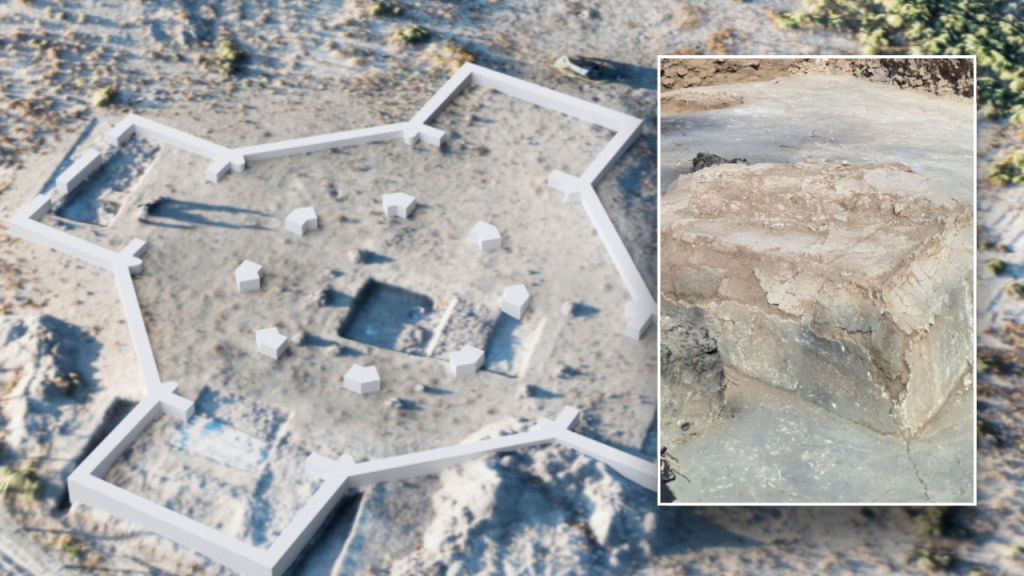Archaeologists have recently uncovered what they believe to be one of the oldest Christian churches in the world, dating back to the fourth century. The University of Münster, in collaboration with archaeologists from the National Academy of Sciences of Armenia, made the discovery at the Artaxata site in the Ararat Plain. The remains of the ancient Christian building, consisting of an octagonal structure with cruciform extensions, were excavated and studied using geophysical methods. The researchers also found remains of wooden platforms that were radiocarbon dated to the mid-4th century AD, making this church a significant discovery in the history of early Christianity.
The octagonal church at Artaxata had a floor made of mortar and terracotta tiles, measuring around 100 feet in diameter. Fragments of marble imported from the Mediterranean were also found at the site, suggesting that the church was lavishly decorated. This discovery is considered the oldest archaeologically documented church in Armenia, providing sensational evidence for the presence of early Christianity in the region. It is believed to be fitting for Armenia, as it was historically the first Christian state ever established, with the conversion of King Tiridates III to Christianity by Gregory the Illuminator in Artaxata in 301 AD.
The medieval monastery of Khor Virap, located near the newly discovered church, serves as a reminder of Armenia’s early Christian tradition. Artaxata itself was once the capital of the Kingdom of Armenia, ruled by the Artaxiad and Arsacid dynasties. The city flourished as an important metropolis during the Hellenistic period and remained the capital of Armenia for nearly six centuries. The historical significance of this discovery sheds light on the early spread and establishment of Christianity in Armenia, contributing to the country’s rich cultural and religious heritage.
The findings at the Artaxata site offer valuable insight into the architectural styles and decorations of early Christian churches in the fourth century. The presence of wooden platforms and imported marble fragments indicates a level of sophistication and craftsmanship in the construction of the church. The excavation and study of this ancient structure provide researchers with a better understanding of the development of Christianity in Armenia and its significance in shaping the country’s cultural identity. The discovery of the fourth-century church adds to the growing body of evidence supporting Armenia’s status as one of the earliest Christian nations in history.
The collaboration between the University of Münster and the National Academy of Sciences of Armenia highlights the importance of international partnerships in conducting archaeological research and uncovering historical treasures. The meticulous excavation and analysis conducted at the Artaxata site have revealed significant findings that contribute to the understanding of early Christian architecture and religious practices in Armenia. The discovery of the oldest documented church in Armenia is a remarkable achievement in the field of archaeology and adds to the rich tapestry of cultural heritage in the region.
Overall, the discovery of the ancient Christian church at Artaxata in Armenia stands as a testament to the early spread and establishment of Christianity in the region. The archaeological findings shed light on the architectural styles, decorations, and cultural significance of early Christian churches in the fourth century. This discovery not only enriches our understanding of Armenia’s history as the first Christian state but also underscores the importance of international collaboration in advancing archaeological research and preserving cultural heritage. The unearthed remains offer a glimpse into the past, providing valuable insights into the religious traditions and practices of early Christians in Armenia.


